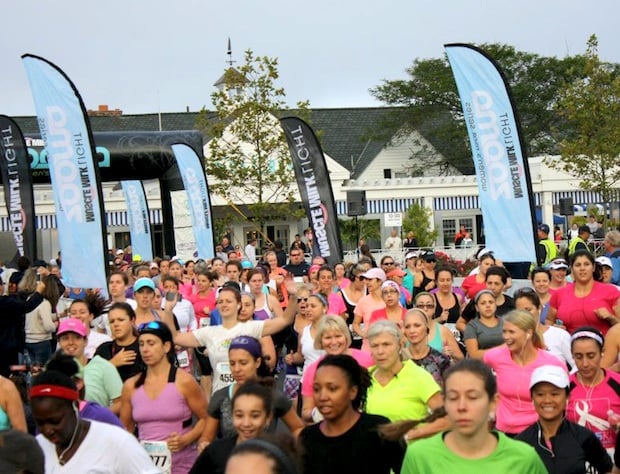Last February, graduate student Alyssa Schwenk ran her first half marathon in Disney World with her mom. She loved it so much she signed up for two more 13.1-milers for later this year.
Liz Badley of Reston has crossed ten half-marathon finish lines; her 11th will be at the inaugural Nike Women’s Half in DC this month. Dorothy Beal, a mom of three and an avid runner, says although she has 23 marathons under her belt, there’s still nothing quite like running the half.
Schwenk, Badley, and Beal aren’t alone in their love for the half marathon. A recent report released by Running USA found that since 2000, the number of half-marathon finishers has increased by a whopping 284 percent, making it the most popular race distance in the country. Last year saw a record 1.85 million finishers—60 percent of whom were female.
“In short, it is the Usain Bolt of the US road race world,” the report said.
It’s easy to understand the attraction of the half, says Brae Blackley, the founder of Zooma, a women’s race series that began in Annapolis in 2006. It’s “a challenge, but also doable with every day life,” she says. “Training doesn’t take over your life, but it’s still a pretty good accomplishment to run a half.”
Blackley adds that the growth of female participants and women-oriented races has exploded in the Washington metro region in the past few years. Zooma’s Annapolis race began with 1,500 participants; this year they’re expecting numbers to more than double. “I’ve really seen the women’s running scene change a lot. The first year of Zooma, there were very few women’s races [on the East Coast]. There was nothing like there is now.”
Now, the Washington metro region is home to popular events such as the Rock ’n’ Roll USA Nation’s Capital and the Marine Corps Historic Half. This year the highly anticipated Nike Half makes its first visit to the nation’s capital; the West Coast race, in San Francisco, drew 20,097 finishers last year, making it the ninth largest half marathon in the world.
Seasoned runners like Beal say half marathons draw a welcome hodgepodge of runners. The races feel more like a social gathering than a competitive race. “It’s become a social thing,” says Beal. “There’s a different crowd of people at the half. You still have the elites, but you see the parents of kids in your children’s classes. You might see your dentist, and other people from the community who don’t necessarily consider themselves full-time runners.”
For new runners like 25-year-old Schwenk, running 13.1 miles is a feasible goal to achieve before trying a full marathon. “They’re not intimidating and they’re usually crazy-fun atmospheres,” Schwenk says, who is signed up for the Nike Half. “There are plenty of non-professional runners sweating their butts off, too. It’s not competitive—people are smiling and laughing.”
Running USA suspects that the half marathon will keep its reputation as the most beloved race in the country this year, with 77 percent of runners (whether female or male, 25 or 50) surveyed saying a half is what they’re most interested to enter in 2013.
Blackley will be one of those 77 percent, even as she organizes her own half marathons around the country. While it’s a great way for her to stay in shape, ultimately, the busy mom of two says, it’s a “sanity preserver.”
Have you run a half marathon before? Tell us why you loved (or hated!) it in the comments section.











